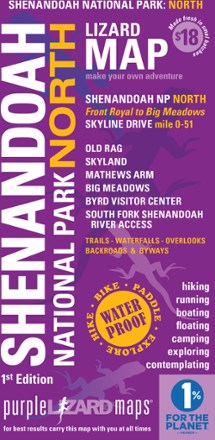Home
Crown Jewel Wilderness: Creating North Cascades National Park
Barnes and Noble
Crown Jewel Wilderness: Creating North Cascades National Park
Current price: $29.95


Barnes and Noble
Crown Jewel Wilderness: Creating North Cascades National Park
Current price: $29.95
Size: Paperback
Loading Inventory...
*Product information may vary - to confirm product availability, pricing, shipping and return information please contact Barnes and Noble
Remote, rugged, and spectacularly majestic, with stunning alpine meadows and jagged peaks that soar beyond ten thousand feet, North Cascades National Park is one of the Pacific Northwest's crown jewels. Now, in the first full-length account, Lauren Danner chronicles its creationjust in time for the park's fiftieth anniversary in 2018.
The North Cascades range benefited from geographic isolation that shielded its mountains from extensive resource extraction and development. Efforts to establish a park began as early as 1892, but gained traction after World War II as economic affluence sparked national interest in wilderness preservation and growing concerns about the impact of harvesting timber to meet escalating postwar housing demands.
As the environmental movement matured, a 1950s Glacier Peak study mobilized conservationists to seek establishment of a national park that prioritized wilderness. Concerned about the National Park Service's policy favoring development for tourism and the United States Forest Service's policy promoting logging in the national forests, conservationists leveraged a changing political environment and the evolving environmental values of the natural resource agencies to achieve the goal of permanent wilderness protection. Their grassroots activism became increasingly sophisticated, eventually leading to the compromise that resulted in the 1968 creation of Washington's magnificent third national park.
The North Cascades range benefited from geographic isolation that shielded its mountains from extensive resource extraction and development. Efforts to establish a park began as early as 1892, but gained traction after World War II as economic affluence sparked national interest in wilderness preservation and growing concerns about the impact of harvesting timber to meet escalating postwar housing demands.
As the environmental movement matured, a 1950s Glacier Peak study mobilized conservationists to seek establishment of a national park that prioritized wilderness. Concerned about the National Park Service's policy favoring development for tourism and the United States Forest Service's policy promoting logging in the national forests, conservationists leveraged a changing political environment and the evolving environmental values of the natural resource agencies to achieve the goal of permanent wilderness protection. Their grassroots activism became increasingly sophisticated, eventually leading to the compromise that resulted in the 1968 creation of Washington's magnificent third national park.


















